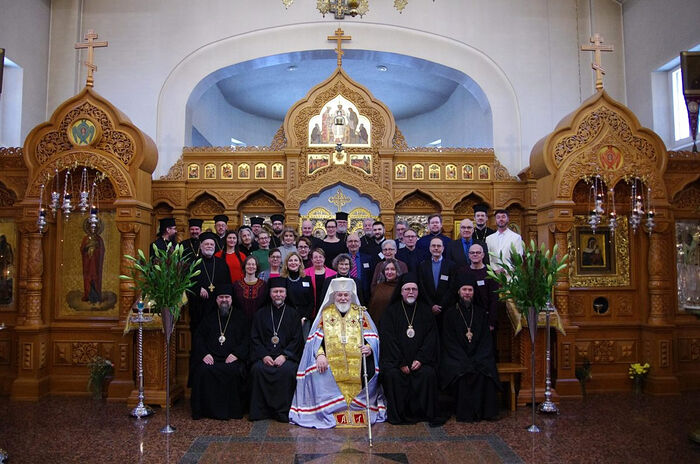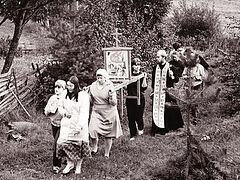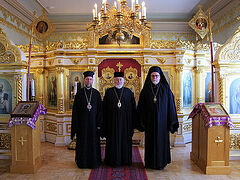Heinävesi, Southern Savonia, Finland, November 30, 2023
 From the Local Council of the Finnish Orthodox Church, November 27-30, 2023. Photo: ort.fi
From the Local Council of the Finnish Orthodox Church, November 27-30, 2023. Photo: ort.fi
By decision of its Local Council and Bishops’ Council, the Finnish Orthodox Church (an autonomous Church within the Patriarchate of Constantinople) will continue to celebrate Pascha according to the Gregorian Paschalion.
The Finnish Church is the only Orthodox Church in the world to date Pascha according to the Gregorian Paschalion—a practice that dates to 1923. The rest of the Orthodox world, whether using the Julian or Gregorian calendar for fixed dates, continues to date Pascha (and therefore Great Lent, Ascension, and Pentecost) according to the Julian Paschalion.
The Local Council, consisting of hierarchical, clerical, and lay representatives opened at New Valaam Monastery in Heinävesi, Southern Savonia, on Monday and concludes today. During the sixth plenary session, the delegates considered and rejected an initiative to begin celebrating Pascha with the rest of the Orthodox world with a vote of 31-4 (1 abstention), reports the Finnish Orthodox Church.
The hierarchs also gathered in a Bishops’ Council on November 28, during which they approved a statement on the timing of Pascha:
Issue 23. Church Council Initiative for a Common Orthodox Pascha
The Orthodox Church of Finland follows the determination of the date of Pascha according to the guidelines of the Council of Nicaea in 325, but also follows the recommendation of Ecumenical Patriarch Meletios IV to adhere to astronomically accurate calculations. According to the definition of the Council of Nicaea in 325, Pascha is celebrated on the first Sunday after the full moon following the vernal equinox, but always after the Jewish Passover. The date of the vernal equinox was then defined as March 21.
No canon related to the date of Pascha has survived from the First Ecumenical Council; the surviving canons relate to disciplinary matters, such as that Pascha should not be celebrated on the same day as the Jewish Passover. The only canon related to the order of worship prohibits kneeling on Sundays and during Pentecost.
Ecumenical Patriarch Meletios IV stated in the official journal of the Patriarchate of Constantinople, Ekklesiastike Aletheia, on June 9, 1923, as follows: The elimination of the difference between religious and civil calendars is absolutely necessary, and there is practically no canonical obstacle against correcting the Church calendar according to astronomical results. According to Meletios, the determination of the Pachal full moon would be based on astronomical calculations, always taking into account scientific advancements.
The so-called Meletios calendar, as described above, was approved for use in our local Church at the extraordinary Church council of 1923 and was also confirmed by the government on August 31, 1923 (Ministry of Education memorandum 1923 Aug. 31 No. 1164). The Church Council also decided on doctrinal matters in the absence of the Bishops’ Council.
The Bishops’ Council only began its activities in 1953. The matter of celebrating Pascha belongs to our Bishops’ Council, due to the nature of its content, as it primarily concerns the application of the decision of the Council of Nicaea to the conditions of the local Church in Finland. The Bishops’ Council unanimously states that, considering the unity of our local Church and taking into account the established tradition, the Orthodox Church of Finland will continue to use the Gregorian calendar.
See the article, “The Date of Orthodox Easter in Finland and Estonia” at Orthodox Christianity Then and Now for more information on why the Finnish Church uses the Gregorian Paschalion (note that the Estonian Church under Constantinople has returned to the Julian Paschalion since the publication of this article).
Follow OrthoChristian on Twitter, Vkontakte, Telegram, WhatsApp, MeWe, and Gab!



